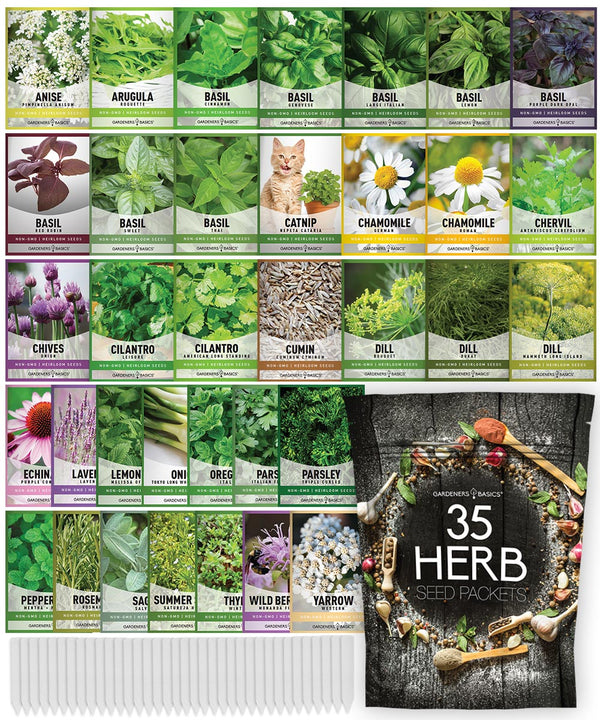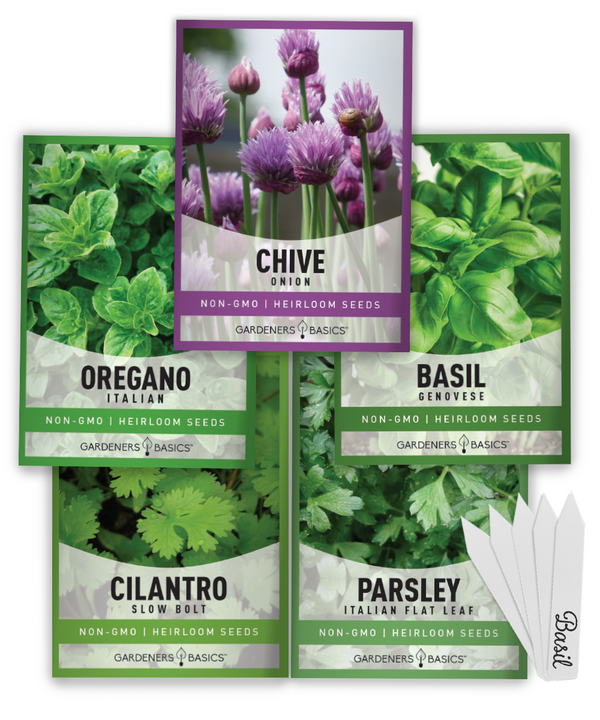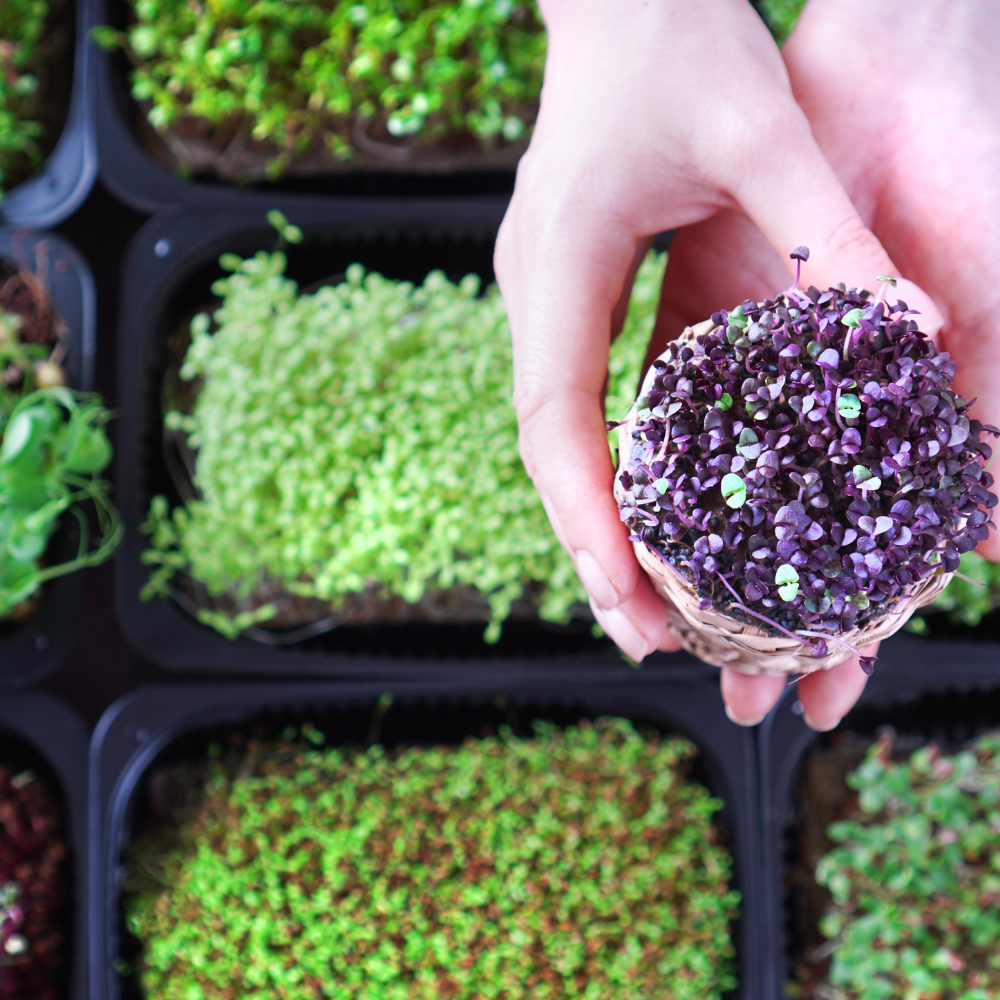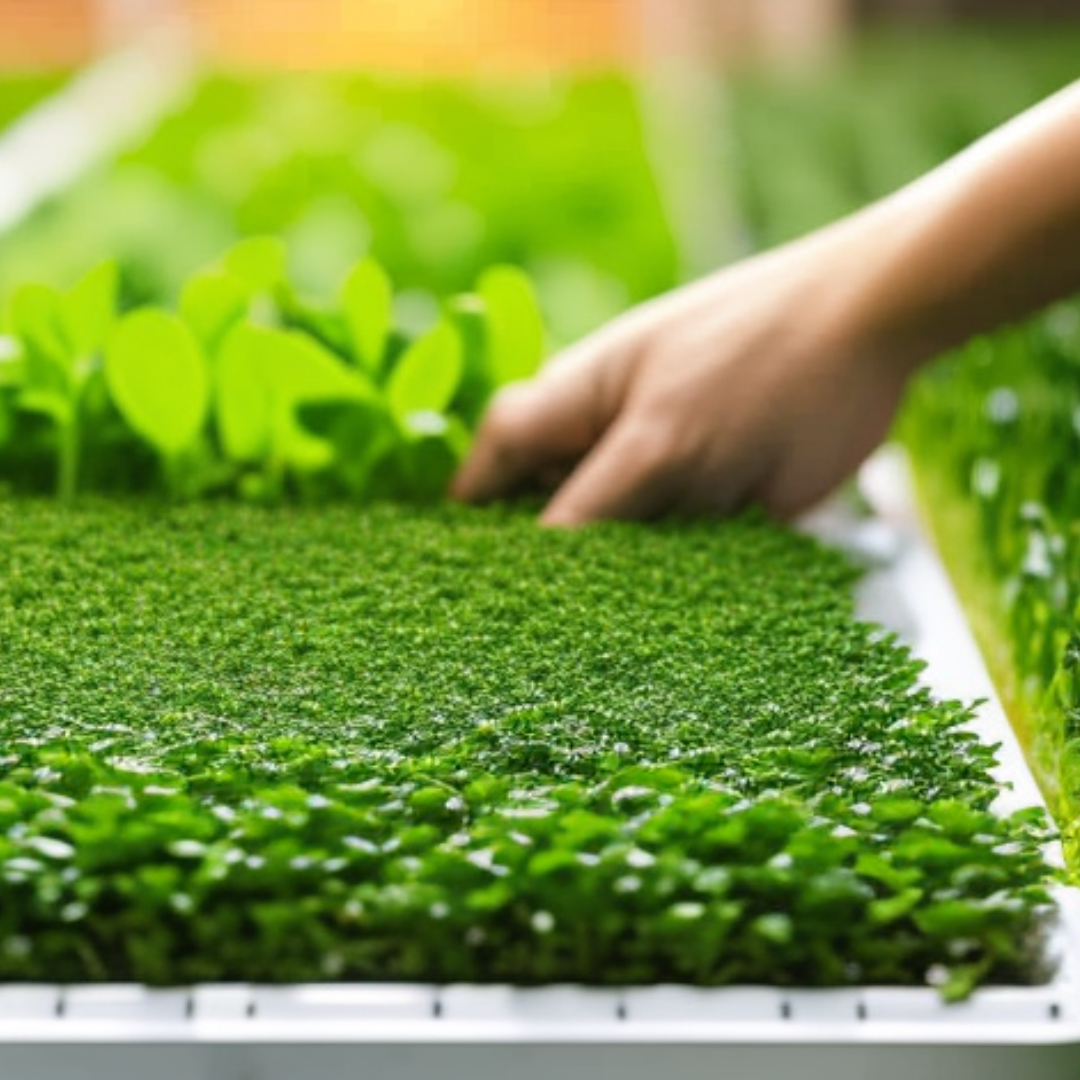Basil microgreens are surprisingly simple to grow and provide flavor and nutrition to any recipe. Consider increasing your own Genovese basil microgreens if you're searching for a fresh, fragrant method to spice up your meals. In this step-by-step manual, we'll show you all you need to know about how to grow basil microgreens in your own home.
Step 1: Collect Your Supplies
There are a few necessary materials you'll need before you begin. What you'll need is as follows:
- *Basil microgreen seeds
- *A growing tray
- * Potting mix
- * Spray bottle
- * A warm sunny location
You can buy microgreen seeds online or at your neighborhood nursery. Although Genovese basil is a well-liked kind, you may also cultivate microgreens with other varieties of basil by using their sources.
$2.49
Premium Heirloom Genovese Basil Seeds – Non-GMO, Non-Hybrid, Open-Pollinated – Perfect for Culinary Herb Gardens Grow the classic flavor of Italy with Genovese Basil seeds, perfect for home gardeners, culinary enthusiasts, and herb lovers. These heirloom, non-GMO, non-hybrid, open-pollinated seeds are… read moreGenovese Basil Seeds

Step 2: Prepare your Growing Medium
Potting soil or a medium for microgreens should be added to your growing tray. The earth should be buried about an inch deep. Use a spray bottle to lightly mist the soil, but don't overdo it.
Step 3: Plant Your Seeds
Evenly distribute your basil microgreen seeds across the ground. Just lightly press them into the soil's top layer; burying them is unnecessary. Since the roots don't require much growing area, you can sow intensively.
Step 4: Cover and Water
Cover your tray with another tray or plastic wrap to make a miniature greenhouse. The seeds will be kept warm and moist as a result, which will promote germination. Put the tray in a nice, sunny location away from the sun.
Use a spray bottle to gently water your seeds each day, making sure the soil is kept moist without becoming soggy. The seeds should begin to sprout after a few days, and little green shoots should appear.
Step 5: Remove the Cover
Remove the cover once the seedlings are about an inch tall. The plants can breathe, and their actual leaves will begin to form. Place the tray in a sunny location with lots of natural light.
$29.95
Heirloom, non-GMO herb seeds for indoor and outdoor home gardens! Introducing our 35 Herb Seeds Variety Pack, the ultimate selection for any herb garden enthusiast! This premium assortment includes heirloom herb seeds that are non-hybrid, open-pollinated, and non-GMO, ensuring you get only… read morePopular Herb Seeds for Planting | 35 Variety Pack

$49.95
Step 6: Feed and Water
Basil microgreens should continue to receive daily irrigation but avoid overwatering. Once they begin to form their real leaves, you can also feed them with a fertilizer that has been diluted.
Step 7: Harvest your microgreens
Your basil microgreens should be ready to harvest in about two weeks. Just above the soil line, trim the stems with razor-sharp scissors. Your microgreens can be used immediately or kept in the fridge for up to a week.
Step 8: Have fun!
Basil microgreens have a great flavor and are nutrient-rich. They are ideal for salads, sandwiches, pasta dishes, and other foods because of their potent basil flavor. Use them as a garnish or in your recipe for a flavorful and fresh twist to your cuisine.
Here are some pointers to develop wholesome and delicious basil microgreens:
Employ a high-quality microgreen growing medium or potting mix. The ground ought to be damp but not soggy.
Use a spray bottle to dampen the soil, but watch out for overwatering.
For your growth tray, pick a site that is warm and sunny. Basil microgreens require lots of sunlight to grow well.
When your microgreens are about two inches tall, harvest them. They will be at their most tasty as a result.
Your microgreens can get too much water if they look yellow or limp. Consider reducing how often you water your plants.
Without a growth tray, a shallow dish as a growth medium, and paper towels. Just watch out that the paper towel doesn't dry out and stays wet.
Basil microgreens can be grown vertically in a hydroponic system if you lack space. This could be an exciting and entertaining way to raise fresh food.
Try experimenting with different basil seed varieties without hesitation. All three types of basil, sweet, Thai, and lemon, grow well as microgreens, each with a distinct flavor.
Try combining your basil microgreens with other kinds of microgreens if you're searching for a quick and straightforward method to spice up your dishes. Microgreens from mustard, arugula, and radish are all delicious additions to salads and sandwiches.
Finally, producing basil microgreens is an easy and pleasant activity that can give your food a vibrant and fresh flavor. You can grow a continuous supply of tasty and healthy microgreens in your home by following these simple instructions and carefully caring for your plants. So why not try to see what delectable concoctions you can make?
$9.95
Heirloom Culinary Herb Seeds for Indoor & Outdoor Planting Introducing our 5 Culinary Herb Seeds Variety Pack, the perfect addition to your kitchen garden or homestead! This exclusive herb seed collection includes heirloom, non-hybrid, open-pollinated, and non-GMO seeds, meticulously selected… read moreCulinary Herb Seed Assortment | 5 Variety Pack








